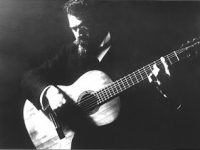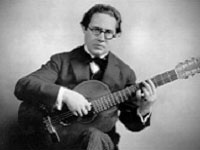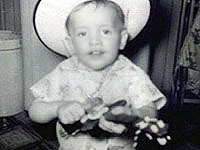The torban is a sort of Ukrainian theorbo, according to Wikipedia:
The torban (also teorban or Ukrainian theorbo) is a Ukrainian musical instrument that combines the features of the Baroque Lute with those of the psaltery. The Тorban differs from the more common European Bass lute known as the Theorbo in that it had additional short treble strings (known as prystrunky) strung along the treble side of the soundboard. It appeared ca. 1700, probably influenced by the central European Theorbo and the Angelique which Cossack mercenaries would have encountered in the Thirty Years’ War, although the likelier possibility is that certain Tuliglowski, a paulite monk, was its inventor. The Torban was manufactured and used mainly in Ukraine, but also occasionally encountered in neighbouring Poland and Russia (only 3 luthiers could be identified from the surviving instruments). There are about 40 torbans in museums around the world, with the largest group of 14 instruments in St. Petersburg. The term “torban” was often misapplied in the vernacular in western Ukraine to any instrument of the Baroque Lute type until the early 20th century.
The surviving printed musical literature for torban is extremely limited, notwithstanding the widespread use of the instrument in Eastern Europe. It was an integral part of the urban oral culture in Ukraine, both in Russian and Polish (later Austro-Hungarian Empire) controlled parts of the country (after the split). To date the only notated examples of torban music recorded are a group of songs from the repertoire of Franz Widort collected by Ukrainian composer and ethnographer Mykola Lysenko and published in the “Kievskaya Starina” journal in 1892, and a collection of songs by Tomasz Padura published in Warsaw in 1844.
The multi-strung, expensive in manufacture, stringing, maintenance and technically difficult fretted torban was considered an instrument of Ukrainian gentry, although most of its practitioners were Ukrainians and Jews of low birth, with a few aristocratic exceptions (e.g. Ivan Mazepa, Andrei Razumovsky, Padura, Rzewucki), a few virtuoso players are known by their reputation, such as Andrey Sychra (from Lithuania), and the Widort family, originally from Austria, but active in Ukraine since late 18th century. The latter has produced 3 generations of torban players: Gregor Widort, his son Cajetan, and grandson Franz.
Such aristocratic associations sealed the instrument’s fate in the aftermath of the Russian Revolution: it was deemed insufficiently proletarian and was discouraged.














